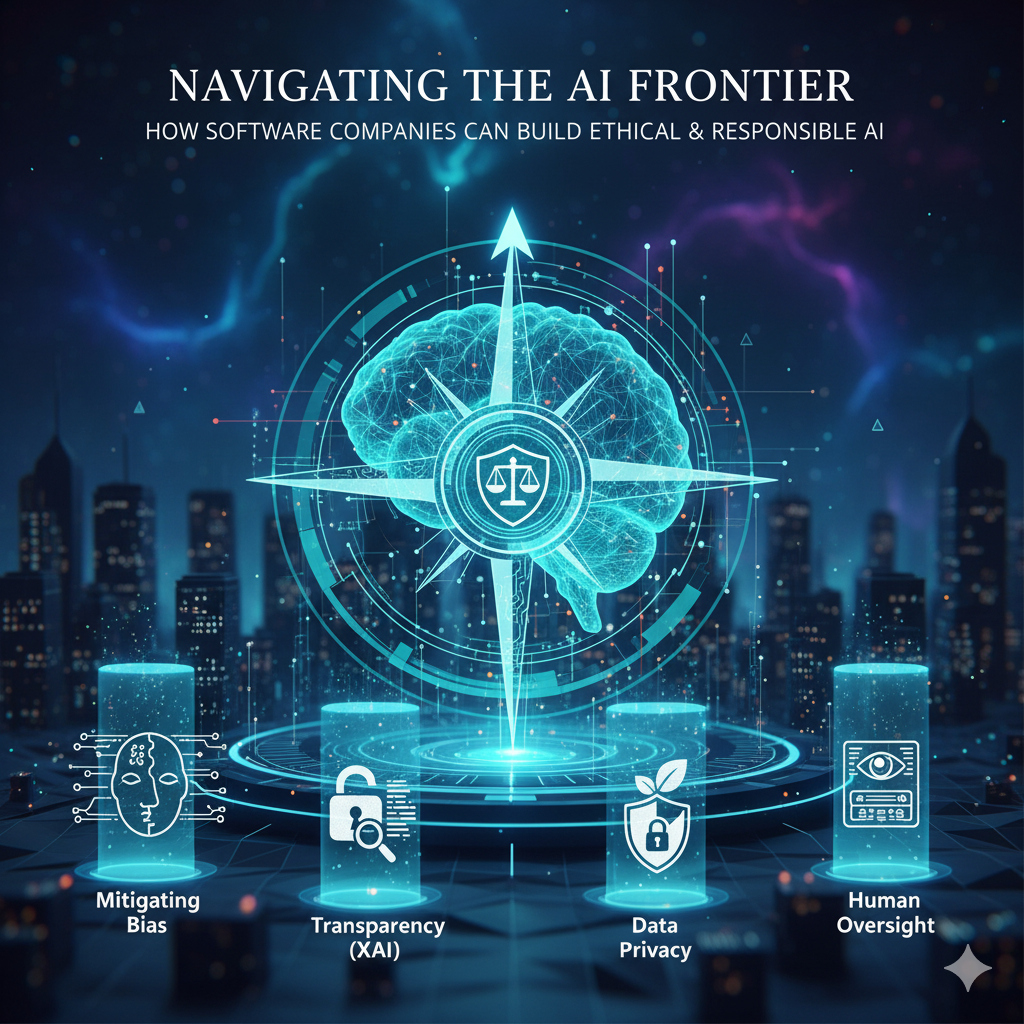1. Introduction: The Double-Edged Sword of AI
-
Hook: Start with the immense potential of AI to revolutionize industries and improve lives, but immediately pivot to its inherent risks if not developed responsibly. Use a vivid image, e.g., "AI is a powerful engine, but without a steering wheel and ethical GPS, it can drive us to unintended destinations."
-
State the Problem: Explain that while AI offers incredible opportunities, it also presents significant challenges related to bias, privacy, transparency, and accountability. Without a focus on ethics, AI can lead to discrimination, distrust, and legal repercussions.
-
Introduce the Solution: Define "Ethical AI" not just as a buzzword, but as a proactive approach to designing, developing, and deploying AI systems that align with human values, fairness, and societal well-being.
-
Preview the Content: Briefly list the key pillars or steps your post will cover for building responsible AI.
2. Pillar 1: Understanding and Mitigating AI Bias
-
Concept: Explain what AI bias is – systematic errors in AI output due to flawed training data or algorithmic design – and why it's so pervasive.
-
Data and Examples:
-
Real-world Impacts:
-
Facial Recognition: Mention studies showing higher error rates for women and people of color.
-
Hiring Algorithms: Examples where AI tools inadvertently favored certain demographics over others due to historical data.
-
-
Sources of Bias: Data collection, labeling, sampling, and model design.
-
-
Strategies for Mitigation:
-
Diverse Data Sets: Emphasize the importance of representative and inclusive training data.
-
Bias Detection Tools: Explain how specialized tools can identify and quantify bias in data and models.
-
Fairness Metrics: Discuss using metrics beyond accuracy to ensure equitable performance across different groups.
-
3. Pillar 2: Ensuring AI Transparency and Explainability (XAI)
-
Concept: Address the "black box" problem of many complex AI models. Explain that users and stakeholders need to understand why an AI made a particular decision.
-
Data and Examples:
-
Regulatory Demands: Mention regulations like GDPR's "right to explanation" for automated decisions.
-
Industry Need: In critical sectors (healthcare, finance), understanding AI rationale is paramount for trust and accountability.
-
-
Strategies for XAI:
-
Interpretable Models: Discuss favoring simpler, more transparent models where appropriate.
-
Post-Hoc Explainability Techniques: Introduce methods like LIME, SHAP, and feature importance that help shed light on complex model decisions.
-
Clear Communication: Emphasize the need to articulate AI's capabilities and limitations to end-users.
-
4. Pillar 3: Prioritizing Data Privacy and Security in A
-
Concept: With AI often requiring vast amounts of data, protecting user privacy and ensuring data security are non-negotiable.
-
Data and Examples:
-
High-Profile Breaches: Briefly mention how AI systems can be vulnerable targets if not secured, and the severe consequences of data leaks.
-
Regulatory Landscape: Reiterate the importance of compliance with GDPR, CCPA, HIPAA, etc., when handling sensitive data for AI training and inference.
-
-
Key Practices:
-
Data Minimization: Only collect and use data that is absolutely necessary.
-
Anonymization & Pseudonymization: Techniques to protect identities while still allowing data utility.
-
Federated Learning: Training models on decentralized data without centralizing raw data, enhancing privacy.
-
Secure Infrastructure: Leveraging robust cloud security practices for AI deployment.
-
5. Pillar 4: Establishing Human Oversight and Accountability
-
Concept: Stress that AI should augment human intelligence, not replace human judgment, especially in high-stakes decisions. Define clear lines of accountability.
-
Data and Examples:
-
"Human-in-the-Loop" Systems: Describe scenarios where human review and intervention are crucial (e.g., medical diagnostics, autonomous driving exceptions).
-
Ethical AI Review Boards: Companies establishing internal committees to vet AI projects for ethical implications.
-
Legal Responsibility: Who is accountable when an AI system makes an error or causes harm?
-
-
Frameworks:
-
AI Governance Frameworks: Developing clear policies and procedures for AI development and deployment.
-
Regular Audits: Continuously monitoring AI system performance and ethical compliance.
-
6. Conclusion: Building a Future of Trust with AI
-
Summarize: Reiterate that ethical AI is not an optional add-on but a fundamental requirement for sustainable and successful AI adoption. It builds trust, fosters innovation, and ensures societal benefit.
-
Call to Action (CTA): Position your company as an expert partner in developing and implementing ethical AI solutions. Invite readers to discuss their AI strategy with your team to ensure their projects are not only innovative but also responsible and trustworthy.
Reiterate that ethical AI is not an optional add-on but a fundamental requirement for sustainable and successful AI adoption. It builds trust, fosters innovation, and ensures societal benefit.



